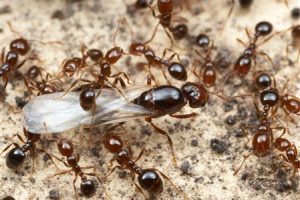Best Practices for Fire Ant Control in Florida Agriculture
The best practices for fire ant control in Florida agriculture should include a call to Fire Ant Control, LLC, three times yearly. We have the products and processes to manage fire ant populations without the exorbitant cost, inconvenience, or chemical exposure risks.
Finding Solutions for Fire Ant Problems
 Red imported fire ants are known to be aggressive, dangerous, and destructive. Unfortunately, they’re also invasive and face minimal natural population control. The problematic nature of red imported fire ants leads to a search for management strategies, especially in the agricultural sector. Fire Ant Control, LLC, offers an effective and convenient approach for all properties, including agricultural, residential, commercial, and public lands.
Red imported fire ants are known to be aggressive, dangerous, and destructive. Unfortunately, they’re also invasive and face minimal natural population control. The problematic nature of red imported fire ants leads to a search for management strategies, especially in the agricultural sector. Fire Ant Control, LLC, offers an effective and convenient approach for all properties, including agricultural, residential, commercial, and public lands.
In the search for a quick solution, you might spend too much, put yourself in danger, and have poor results. Instead, reach out to the pros here at Fire Ant Control, LLC. We know how to handle your fire ant problem.
The Basics of Fire Ant Habitation
Fire ants will live practically anywhere that can provide food, warmth, and moisture, but they like the warmth of open and sunny areas the best, making your pastures and fields highly vulnerable to infestation.
The appearance of mounds of loose soil can identify the typical nesting place of fire ants. However, fire ants will also make their homes underneath fallen limbs and branches, underneath slabs, in HVAC systems, and even indoors inside your pantry, laundry room, or other area where food or moisture abounds.
The secrets to fire ant success include the speed of reproduction, the aggressiveness of their defense, the capacity to eat anything, and the queen’s defense over the individual.
What Not to Do
- Add grits or rice to the mound. The theory behind this notion is that fire ants will swell up and explode if they eat grits or rice, but the basis for this notion is wrong. Larvae liquify all fire ant nourishment. Fire ants don’t eat any solids, including rice or grits.
- Pour club soda on fire ant mounds. A common myth on the internet is that club soda will suffocate an entire colony when poured over a mound; this notion is preposterous. The queen is too far deep in the colony and too well protected for this method to have any impact.
- Combine fire ant colonies to spur a war between colonies. If you follow this advice, you could increase the issue with fire ants by adding new citizens to the colony.
- Pour gas, oil, acid, bleach, ammonia, etc., on the mound. These products may not be pesticides but aren’t environmentally friendly or safe to pour.
- Add ashes to the mound. Yet another myth, the idea that ashes will damage ants’ exoskeletons, is entirely false.
The Solution – at the Source
Handling a fire ant population successfully requires that the method addresses the queen. If you fail to eliminate the source of new fire ants, the queen will keep replenishing the colony, and the population will become problematic and spread quickly.
At Fire Ant Control, LLC, we use a granular bait that is tempting to the scavenging ants who are searching for food for the queen. When they carry it down for her meal, she becomes infertile. Within a single life cycle, the fire ant population will dwindle down by a minimum of 85%. Our service may take time, but it is highly effective and long-lasting.
Fire ant control in the Florida agriculture sector is vital, and Fire Ant Control, LLC, deserves to be part of your best practices. Click here or call 239-312-8200 to book a service.
